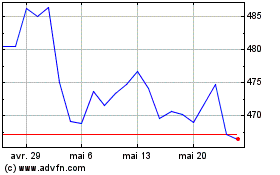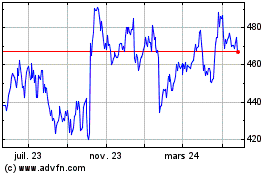By James R. Hagerty
Simon Ramo made his mark in aerospace history in the 1950s as a
leader of the U.S. race against the Soviet Union to build missiles
capable of flashing nuclear weapons around the world. He lived
another 60 years, giving him time to develop spacecraft, write or
co-write more than 60 books, advise the White House on technology
and play his violin.
Among friends, who knew him as Si, he was admired for his quick
wit. At an early missile test, one of the rockets toppled over
after rising only about 6 inches. "Well," he is said to have
quipped, "now that we know the thing can fly, all we have to do is
improve its range a bit."
Dr. Ramo died June 27 at his home in Santa Monica, Calif. He was
103 years old.
Dr. Ramo was a co-founder of TRW Inc., an aerospace and
auto-parts company sold to Northrop Grumman Corp. in 2002. Among
his many accolades was the Presidential Medal of Freedom, awarded
by President Ronald Reagan. He joined in violin jam sessions with
masters including Jascha Heifetz. At age 100 he earned his final
patent, for educational software.
Ever curious, Dr. Ramo would start researching a new topic, "and
the next thing you know he's writing a book about it," said Ronald
Sugar, a longtime friend. While Dr. Sugar was chief executive of
Northrop, he got a call from Dr. Ramo proposing that the two should
collaborate on a book about business forecasting.
"Si, I'm kind of busy right now," Dr. Sugar recalled saying. Dr.
Ramo wouldn't be put off. He immediately sent Dr. Sugar a draft and
told him to feel free to make changes or additions.
After buying TRW in 2002, Northrop called on Dr. Ramo to
reassure nervous TRW employees. "I'm the R in TRW," he told them,
"and I'm really very happy that there are three Rs in Northrop
Grumman." That quip "defused all the angst in the room," said Kent
Kresa, then CEO of Northrop.
Dr. Ramo was never short of ideas for how to reorder the world.
In his book "Cure for Chaos," he explained how to organize a
"systems approach" to mobilize the expertise of many specialists to
address problems holistically, rather than piecemeal. He argued
that the U.S. had learned to use that approach for weaponry and
consumer goods but not to do such things as improve hospitals or
create efficient mass transit.
In two books on tennis, he explained how even a so-so player
could win. One tip: Praise your opponent for making a shot that
lands just inside the line. The overconfident opponent may then
lose points trying to repeat the trick.
In his book "Meetings, Meetings, and More Meetings," Dr. Ramo
estimated he had devoted 10 years of his life to them. He once
described himself as a "professional meeting goer-toer." His advice
for meeting organizers was to invite only people essential to
advancing the agenda.
Dr. Ramo saw humor as a vital management tool. For leaders
lacking a funny bone, he suggested studying books of witty remarks.
He recommended "The 2,548 Best Things Anybody Ever Said" by Robert
Byrne. Yet he advised against trying too hard to be funny and said
that "if the joke starts with 'a minister, a priest and a rabbi...'
don't tell it."
Simon Ramo was born May 7, 1913, and grew up in Salt Lake City.
His father, who had immigrated from Brest-Litovsk, then ruled by
Russia, ran a men's clothing store. Young Simon spent his college
savings on a $325 violin, betting correctly that it would help him
win a musical contest and gain a scholarship at the University of
Utah. He studied engineering there.
At age 23, he earned a doctorate in physics and electrical
engineering at the California Institute of Technology.
General Electric Co. hired him as a researcher in Schenectady,
N.Y., in 1936 -- partly, he said, for his violin skills. (GE
supported the symphony orchestra in Schenectady and supplied some
of its musicians.)
In the lab, "they let me do whatever I wanted," he recalled. Dr.
Ramo worked on generating microwaves, or "extremely high-frequency
electrical phenomena," as he described them. That led him to the
field of radar, where he did military-related work at GE during
World War II.
After the war, he joined Hughes Aircraft Co., where he created a
defense-electronics business. Concluding that the company's owner,
Howard Hughes, was too eccentric for dealings with the Pentagon,
Dr. Ramo and a friend from his Caltech days, Dean Wooldridge, split
off in 1953 to form their own defense-electronics company,
Ramo-Wooldridge, later TRW. Their first office was a former
barbershop in Los Angeles. The Pentagon soon hired Dr. Ramo and his
new firm to coordinate development of an intercontinental ballistic
missile, dubbed the ICBM.
The arms race was on. As Dr. Ramo wrote later, "A surprise
strike by a large fleet of Soviet ICBMs carrying nuclear bombs
could destroy the U.S. in half an hour." Some early U.S. test
missiles blew up or swerved crazily off course. By the late 1950s,
though, the missiles were reliably hitting targets more than 5,000
miles away. Dr. Ramo judged that the U.S. was "safely ahead" of the
Soviets, at least temporarily.
He already was guiding TRW into a new field, spacecraft. After
retiring from TRW in 1978, Dr. Ramo became an all-round sage and
author.
Dr. Sugar, the former CEO of Northrop, often lunched with him in
the 1990s at the Los Angeles Country Club. Dr. Sugar said he was
eager to hear Mr. Ramo talk about the history he had lived through,
but "all Si really wanted to talk about was the future." One topic
he liked was the potential for robots to replace soldiers -- the
subject of his 2011 book "Let Robots Do the Dying."
Dr. Ramo is survived by two sons, Jim and Alan, four
grandchildren and three great grandchildren. His wife, Virginia,
died in 2009.
Write to James R. Hagerty at bob.hagerty@wsj.com
(END) Dow Jones Newswires
July 08, 2016 11:11 ET (15:11 GMT)
Copyright (c) 2016 Dow Jones & Company, Inc.
Northrop Grumman (NYSE:NOC)
Graphique Historique de l'Action
De Juin 2024 à Juil 2024

Northrop Grumman (NYSE:NOC)
Graphique Historique de l'Action
De Juil 2023 à Juil 2024
